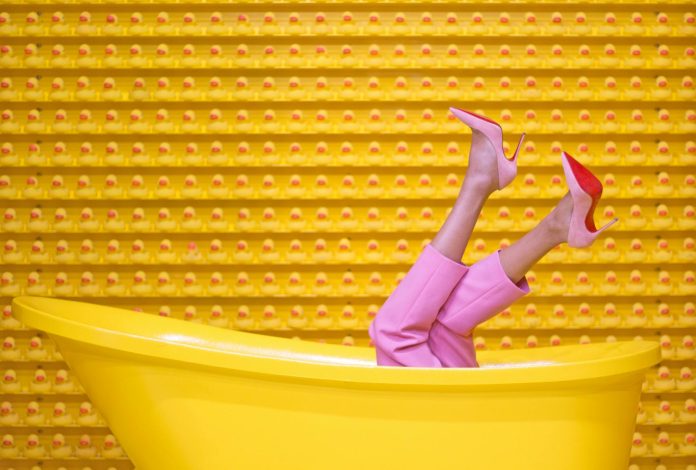Fashion has always been a dynamic and integral part of human history, serving as a mirror to societal shifts, cultural influences, and individual expression. The evolution of women’s fashion over the decades is particularly fascinating, showcasing not only changes in style but also shifts in societal norms and the roles of women. This article delves into the captivating journey of women’s fashion from the early 20th century to the present day, highlighting key trends and their cultural significance.
The Roaring Twenties
The 1920s, often referred to as the Roaring Twenties, marked a dramatic shift in women’s fashion. The end of World War I brought about a sense of liberation and new-found freedom for women. This era introduced the iconic flapper dress, characterized by its loose, straight silhouette, knee-length hemline, and lavish embellishments like sequins and fringe. Women began to embrace shorter hairstyles, with the bob becoming a symbol of modernity and rebellion against traditional norms. The flapper dress was not just a fashion statement but a reflection of women’s changing roles in society, as they began to assert their independence and challenge gender norms.
The Glamorous Thirties and Forties
The 1930s and 1940s saw women’s fashion take on a more sophisticated and glamorous tone, heavily influenced by Hollywood. The Great Depression of the 1930s brought about a return to more conservative and practical clothing, yet evening wear remained glamorous with floor-length gowns and elegant cuts. By the 1940s, World War II had a significant impact on fashion. Fabric rationing led to more utilitarian and tailored designs, giving rise to the “utility suit” for women. Despite the austerity, women managed to maintain elegance with structured shoulders, nipped-in waists, and A-line skirts. The iconic “Rosie the Riveter” look, with its practical yet stylish appeal, symbolized women’s growing presence in the workforce and their contribution to the war effort.
The Revolutionary Sixties and Seventies
The 1960s and 1970s were decades of radical change, and women’s fashion was at the forefront of this cultural revolution. The 1960s introduced bold, youthful styles with vibrant colors, geometric patterns, and revolutionary silhouettes like the mini skirt, popularized by designer Mary Quant. This decade also saw the rise of the mod style, characterized by its sleek, modern aesthetic and influence from London’s fashion scene. The late 1960s and early 1970s brought about the hippie movement, with its bohemian styles, flowing maxi dresses, and eclectic mix of ethnic influences. This era was marked by a spirit of rebellion and a desire for self-expression, as women embraced more relaxed and unconventional looks.
The 1970s continued this trend with the rise of disco fashion, which emphasized glamorous and extravagant styles. Sequins, metallic fabrics, and platform shoes became staples of the disco era, reflecting the exuberance and hedonism of the time. At the same time, there was a growing interest in vintage and handmade clothing, as the counterculture movement championed individuality and sustainability. The feminist movement of the 1970s also played a crucial role in shaping fashion, as women sought to break free from traditional gender roles and embrace more androgynous styles.
The Bold Eighties and Nineties
The 1980s were characterized by bold, exaggerated fashion statements. Power dressing became a significant trend, with women donning sharp-shouldered blazers, tailored suits, and bold accessories to convey authority and confidence in the workplace. This era was also marked by the rise of designer labels and luxury fashion, as brands like Chanel, Versace, and Yves Saint Laurent gained prominence. The influence of music and pop culture was evident, with iconic styles inspired by artists like Madonna and Michael Jackson. Neon colors, oversized silhouettes, and daring fashion choices defined the 1980s, reflecting a decade of excess and experimentation.
The 1990s brought about a more relaxed and minimalist approach to fashion, as the grunge movement emerged in response to the excesses of the previous decade. Grunge fashion, popularized by bands like Nirvana and Pearl Jam, featured oversized flannel shirts, ripped jeans, and combat boots, embodying a rebellious and anti-establishment attitude. At the same time, the 1990s saw the rise of the supermodel era, with figures like Naomi Campbell, Cindy Crawford, and Kate Moss dominating the fashion world. This decade also witnessed the emergence of streetwear and hip-hop fashion, as brands like Tommy Hilfiger and FUBU became cultural icons.
The Innovative 2000s and Beyond
The turn of the millennium brought about rapid changes in fashion, driven by technological advancements and globalization. The 2000s saw the rise of fast fashion, with brands like Zara and H&M making trendy clothing accessible to a wider audience. This era also embraced a mix of styles, from the boho-chic look popularized by celebrities like Sienna Miller to the sporty athleisure trend. The digital age revolutionized fashion, as social media platforms like Instagram and YouTube allowed influencers and bloggers to shape trends and reach global audiences.
In recent years, there has been a growing emphasis on sustainability and ethical fashion, as consumers become more aware of the environmental and social impact of their choices. Vintage and second-hand clothing have gained popularity, along with brands that prioritize eco-friendly practices. Women’s fashion continues to evolve, reflecting changing attitudes and values in society. The rise of gender-neutral fashion and the celebration of diversity and inclusivity are shaping the future of fashion, as designers and consumers alike embrace a more fluid and inclusive approach to style.
The history of women’s fashion is a rich tapestry that reflects the cultural, social, and political changes of each era. From the flapper dresses of the 1920s to the bold power suits of the 1980s and the sustainable fashion movement of today, each decade has left its mark on the way women dress and express themselves. Understanding this evolution not only provides insight into the past but also highlights the ongoing dialogue between fashion and society. As we look to the future, the continued innovation and diversity in women’s fashion promise an exciting and ever-changing landscape that will inspire generations to come.

